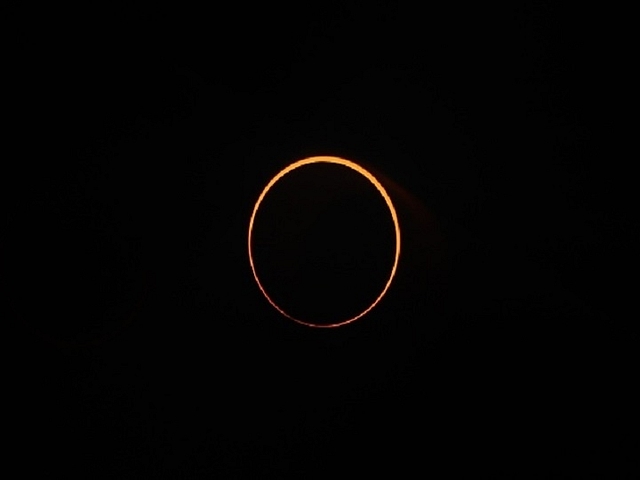
India Witnesses Annular Solar Eclipse; ‘Ring Of Fire’ Visible From Chandigarh, Delhi And Other Locations
The third Sunday of the month on 21 June 2020 provided an eventful day with International Yoga Day, a solar eclipse, Father’s Day. The day also happens to be the longest day of the year.
People across the country celebrated the occasions while also watching with excitement the rare phenomenon with the “ring of fire” being visible from some locations.
This was the first solar eclipse of the year and also the deepest one of the century. The eclipse was visible for over three hours and it reached its peak in the noon time when the sun appeared as a “ring of fire” for few seconds. However, the ring could only be seen along a narrow corridor running through Chandigarh, Delhi, Shimla and Jaipur.
The solar eclipse started from around 9:00am across the Indian map as the Sun, the Moon, and the Earth came in a straight line, and the country witnessed the 'deepest' annular solar eclipse in over a century and the third eclipse even for this year after first two lunar eclipses took place in January and June.
The eclipse began around 9:00am and lasted till 2:28pm While most of India witnessed a partial solar eclipse, certain places in Haryana, Uttarakhand and Rajasthan observed the phenomenon of Baily's Beads. These include Dehradun, Kurukshetra, Chamoli, Joshimath, Sirsa and Suratgarh.
Delhi, Mumbai, Kolkata and Chennai --the four metropolitan cities of India--observed the eclipse between three hours 19 minutes and three hours 28 minutes. In the national capital, the eclipse began at 10:20am and ended at 1:48pm, with the maximum phase occurring at around noon.
The maximum coverage of Sun was witnessed in Chandigarh (96.62 per cent) followed by Shimla (96.46 per cent), New Delhi (93.77 per cent), Jaipur (88.46 per cent), Jammu (87.36 per cent), Itanagar (84.40 per cent) and Lucknow (84.25 per cent).
Astrologers said it is a fourth super rare hybrid eclipse which is a mix between an annular and total solar eclipse. Areas like Hyderabad, Chennai, Bhubaneshwar, Kolkata, Lucknow, Mumbai, Delhi, Patna, Shillong and more witnessed a partial phase of the annular solar eclipse from 9:00am.
A solar eclipse occurs when the new Moon comes between the Sun and the Earth, blocking the Sun's rays to the Earth. The three celestial bodies are in a straight line. An annular solar eclipse occurs when the apparent size of the moon is only slightly less than the Sun's - or the Moon almost covers the Sun - leaving only the outer rim of the Sun uncovered, and hence giving the appearance of a “ring of fire” or as a necklace of pearls.
The ring this time was very thin, as the Moon covered over 98.8 per cent of the Sun, making it the deepest annular eclipse of the century in India. The COVID-19 pandemic has dampened the plans of many eclipse chasers trying to capture the event due to curbs on public gathering.
However, many used safe techniques to observe the solar eclipse by using a proper filter like aluminised Mylar, black polymer, welding glass of shade number 14, or by making projection of the Sun's image on a white board using a telescope as advised by the Ministry of Earth Sciences (MoES).
(With inputs from IANS)